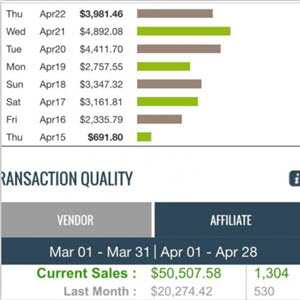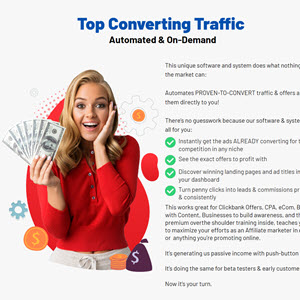Putting Together the Right Message
In 1978, when I started my career as a professional speaker and seminar leader, one of the venerable deans of public speaking, Cavett Robert, sagely cautioned: "Don't be in too much of a hurry to promote, until you get good. Otherwise you just speed up the rate at which the world finds out you're no good." Harsh but good advice. It's been my observation since that large numbers of businesspeople in all fields rush to promote without stopping long enough to be sure they have something really worth promoting.
A different expression of this same idea is this anonymous poem for advertisers:
A lion met a tiger As they drank beside a pool Said the tiger, "Tell my why You're roaring like a fool."
"That's not foolish," said the lion With a twinkle in his eyes "They call me king of all the beasts Because I advertise!"
A rabbit heard them talking And ran home like a streak He thought he'd try the lion's plan, But his roar was just a squeak.
A fox came to investigate—
Had luncheon in the woods.
Moral: when you advertise, my friends,
Be sure you've got the goods!
Marketing—and The Ultimate Marketing Plan—begins not with any particular media or strategy; it starts with putting together the best, most promotable message possible which truthfully represents "the goods" you've got.
I'm going to suggest a little exercise to you. Stop reading here long enough to get your yellow pages telephone directory out and open it up to the business category your present or planned business best fits in. Start with the first ad and a thick pad of paper. Write down each promise, feature, benefit, and statement in the first advertiser's ad. When you find one of these same statements in the next advertiser's ad, just put a mark next to it, and keep stick-counting the number of times the same statement appears in all the ads in the section. If you find a new or different statement in any of the ads, add it to your list, then stick-count the number of times it reoccurs in other ads.
This exercise is instructive for two reasons. First, the yellow pages is the most competitive, toughest advertising arena there is. With most other media, your ad is not surrounded by your competitors' ads. Your billboard stands alone. Your sales letter or brochure, in the recipient's hands, has exclusive if momentary attention. But in the yellow pages, your ad is next to, above, below, and/or grouped with all your competitors' ads. You are all presenting your messages simultaneously to the same prospective customer. Here, only the strong survive; only the strongest prosper.
Second, in spite of this obvious, extreme competitiveness, your stick-counted list will glaringly reveal one astounding fact:
Everybody is saying the same thing. Everybody is delivering the same message.
While this seems to be the way to do things, because that's the way everybody is doing things, it is definitely the wrong approach if you seek exceptional success, even dominance in your marketplace.
Contrary to all this me-tooism, the "key to the vault" in marketing in general and in this tough medium in specific is a message that differentiates you from all your competitors in a positive, appealing, preferably compelling way. Many marketing pros call this a "unique selling proposition."
ULTIMATE MARKETING SECRET WEAPON #1 THE GREAT USP
A unique selling proposition (USP) is a way of explaining your position against your competition. When a supermarket chain labels itself as "THE Low Price Leader," it has made a positioning promise.
It's also a way of summarizing and telegraphing one of the chief benefits, often the chief benefit of the business, product, or service being marketed. As I write this book, Chrysler is making much out of being the only American car maker to include driver's-side air bags as standard equipment
Your USP may express the "theme" of your business, product, or service. Think: which coffee is "mountain grown"? Which beer is made with "the cold, clear water of the Rockies"?
These examples show that a USP can be based on just about anything: price, product ingredient, positioning. There are USPs based on color, size, scent, celebrity endorsement, location, hours of operation, and on and on.
As you concentrate on developing a new USP for your enterprise, you'll be newly aware of the USPs of other businesses, and you can learn from their examples. To hone your marketing mind, you need to become USP-sensitive and ask these questions about every business, product, and service you encounter in your daily activities:
1. Does this business have a USP?
3. If so, is there a way I can think of to improve it?
4. Is there any idea here I can "steal" for my use?
Continue reading here: The Three Best Ways to Target Market
Was this article helpful?

